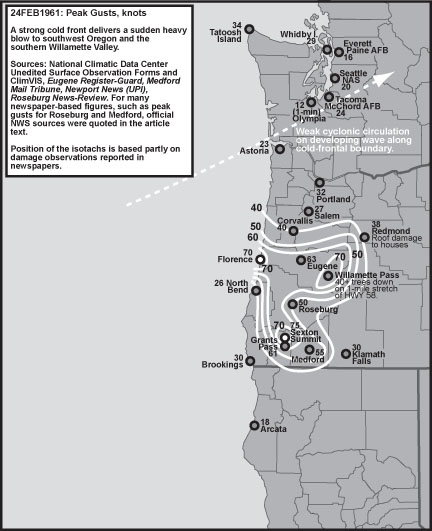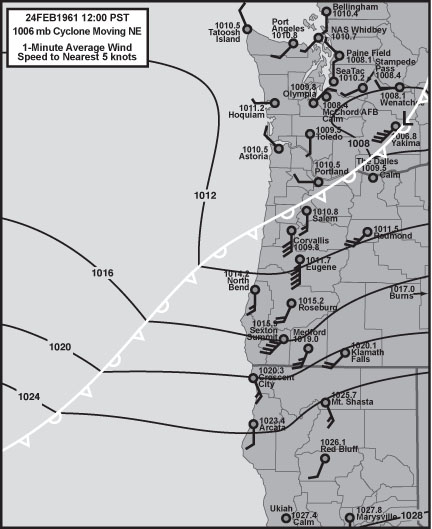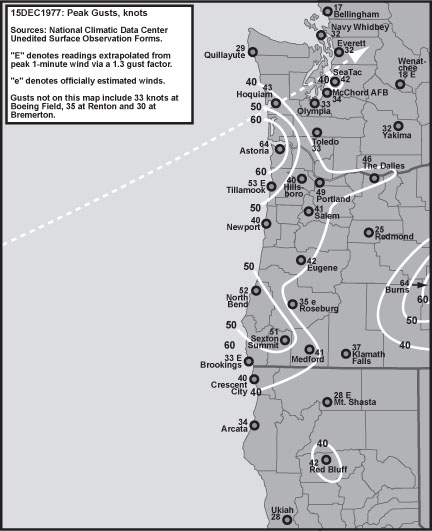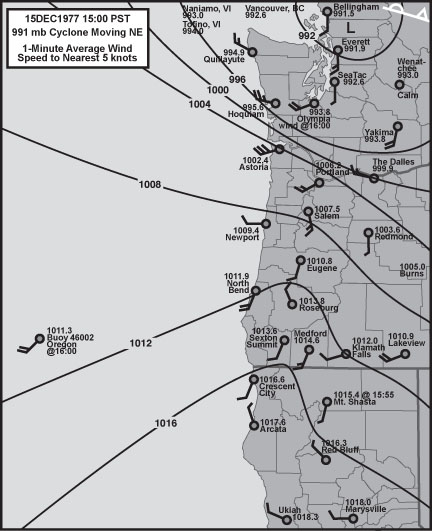03 Nov 1958
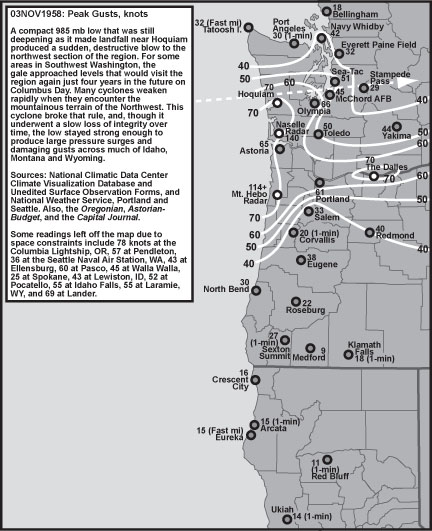
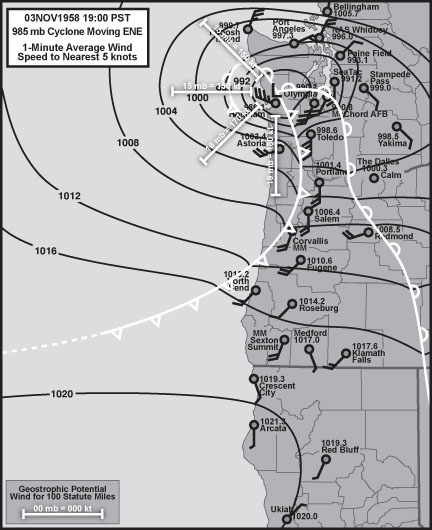
03 Nov 1958: This very intense 985 mb low moved ashore right over Hoquiam on a path that was nearly due east, which put the low just north of Olympia and between Sea-Tac and Tacoma on its way into the Cascades. Like the 10 Nov 1975 and 07 Feb 2002 events, the cyclone was developing explosively as it moved inland, making for a particularly aggressive windstorm. There’s evidence for a central pressure drop of at least 20 mb in six hours just before the low reached the Pacific Coast. The barograph trace at Hoquiam has a sharp "V" like a hurricane. Pressure tendencies at this location included -7.1 mb/hr as the low neared, and +13.9 mb/hr as the cyclone moved into the Puget Lowlands. Like Hoquiam, Olympia’s barometer recorded some incredible pressure changes, including a +9.8 mb/hr surge. During the space of three pressure observations--two hours--the HQM-OLM gradient shifted from -7.4 mb to +7.4 mb. Other notable pressure gradients include +35.2 mb ACV-HQM, +17.3 mb AST-HQM with -13.6 mb HQM-TTI at the same time, +13.2 mb PDX-OLM and +8.4 mb TDO-OLM (37 statute miles). These values suggest a geostrophic wind potential at around 200 knots. The predicted 100-knot 1-minute winds at the surface were not realized, being about 50% of expected, likely due to unfavorable track direction relative to terrain features; nevertheless, due to the storm’s intensity, wind velocities at some stations were among the highest in the period of record.
At Hoquiam, wind direction went through many compass points with this storm, starting out E as the low approached, shifting to a S whole gale for a brief time as the low’s leading front went through and then swinging W to NW at near hurricane force as the low passed to the east. For Hoquiam, 1-minute wind reached 45 knots with a gust to 70, on par with the Columbus Day storm. Olympia also went through a series of intense wind changes, with no less than three periods with significant acceleration, suggesting a very complex structure to this storm. Maximum winds, out of the south, reached 52 knots gusting 66, values second only to the Columbus Day storm. Also of interest was the particularly strong NW wind at Sea-Tac, with a gust to 51 knots, which suggests that a well-developed bent-back occlusion swept through the area. The storm’s focused area of wind attack is also noteworthy, with wind velocity decreasing quickly south of an Astoria to Portland line and north of Hoquiam to Seattle. Oregon’s south coast and northern California were barely even influenced by this cyclone. Aided by one of the highest positive AST-DLS gradients in the 1948-present time period, +8.8 mb, and the easterly track of the low, a particularly damaging westerly gale tore through the Columbia River Gorge. The Dalles reported its highest wind speed for any windstorm in this study, with winds of 52 knots gusting 70, values that apparently caused significant disruption to the region’s high-voltage electrical grid.
